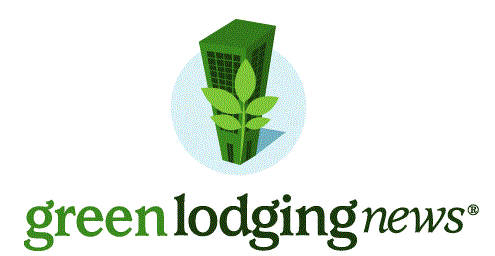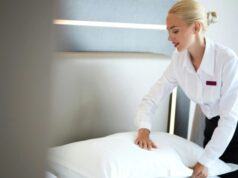As building and facility managers, you are probably aware of the availability of green cleaning products, at least on the periphery. But there’s much more to green cleaning than just environmentally preferable cleaning products. Green cleaning is not about simply replacing your current product with a milder cleaner. By definition, green cleaning can simply be defined as “cleaning to protect health without harming the environment.”
Green cleaning is about understanding the unique requirements of your building and your occupants, examining your entire process of cleaning, identifying the areas that can be improved, developing a plan and the procedures to implement the plan, executing the plan and measuring the results. A properly designed and implemented plan will have positive impact on the cleanliness of your facility, the health and performance of its occupants and your ROI.
The U.S. Environmental Protection Agency notes that the cleaning industry employs about 2.8 million janitors. In addition, many other building occupants perform light cleaning on a routine or occasional basis, e.g. dusting, wiping off desks and counters, etc., making all building occupants potentially exposed to hazardous components of commercially available, non-green, traditional, cleaning products and potentially creating serious problems in a building.
For example, chlorinated cleaners such as some sanitizers and mold and mildew stain removers contain bleach (sodium hypochlorite). Traditional cleaning products formulated with this ingredient can cause serious skin and eye burns; irritate the respiratory tract, which can be especially problematic for those with asthma; permanently damage clothing, carpeting and other fabrics through accidental contact; and, if mixed with other commonly used cleaning agents such as those containing ammonia will produce a poisonous gas.
American businesses use more than six billion pounds of cleaning chemicals a year. Now add to it the 500 million pounds of janitorial equipment—enough to fill 10,000 garbage trucks—that are shipped to landfills every year, and this becomes a much more serious conversation than anyone anticipated. Then there’s the 4.5 billion pounds of janitorial paper products—toilet tissue and paper hand towels—most of which is made from virgin tree fiber requiring the cutting of approximately 15 million trees and which is then bleached with chlorine compounds—creating huge impacts on our forests and recreational areas.
Furthermore, researchers have determined that the impact of the indoor environment on worker productivity can result in a savings of three to 34 minutes per day, per worker. On the conservative side, those three minutes might be saved by reducing the frequency of blowing a nose, rubbing an eye, dealing with an allergen-induced headache, not to mention the avoidance of calls to doctors and pharmacies, and time wasted discussing these maladies with co-workers.
BOMA (Building Office and Managers Assn.) estimates the cost of salaries and benefits per square foot in a “Class A” office building is nearly $150. Thus, a three-minute-per-day increase in productivity results in $0.75 per sq. ft. saved. Now contrast this with electrical upgrades and retrofits that are made because they can save up to $0.25 per square foot and it’s clear that the time has come for a green cleaning discussion in the boardroom.
It should be clear that the pursuit of traditional, non-green cleaning programs has wide ranging and deleterious effects on personal health, safety and performance of those who are employed in the commercial cleaning industry, building occupants who may perform light cleaning tasks, all building occupants in general, and the greater environment.
The good news is that not all current commercial cleaning products are toxic, and in fact cleaning has made important contributions to protecting health and our facilities themselves. Green cleaning simply represents the development of new technologies that allows for cost effective cleaning, while at the same time further reducing the risk of harm to both health and the environment.
In fact, the cleaning industry is embracing green cleaning. The International Sanitary Supply Assn. (ISSA)—with 4,800 corporate members—is the co-sponsor of a program with the U.S. Green Building Council (USGBC) on meeting LEED-EB (Leadership in Energy and Environmental Design—Existing Buildings) Green Buildings Rating System requirements and the Building Services Contractors Association International (BSCAI)—with more than 2,000 corporate members—recently published a book on green cleaning.
So, whether you use an in-house cleaning staff or contract out your cleaning services, you have more leverage than you think. Thanks in part to organizations such as the USGBC, green building has become entrenched in the minds of most building owners and managers in the United States and similarly around the world in countries such as Australia, India and even China. The USGBC’s recently adopted LEED-EB rating system provides a set of credits and performance standards for the sustainable operation of existing buildings that can serve as the “road map” to green cleaning.
The LEED-EB criteria cover building operations and systems upgrades in existing buildings where the majority of interior or exterior surfaces remain unchanged, reducing the environmental impacts of cleaning. LEED-EB credits can be gained through green cleaning (up to 13 credits) for a range of activities from purchasing cleaning products, janitorial paper and equipment, to exterior maintenance and pest management, to training, recycling and more.
So even if you’re starting to “get it” about the potentially positive effects of green cleaning products, how do you justify the upfront costs as well as the time and effort to change out your supplies? The simple answer is because today it’s easier and more cost-effective than ever. Over the past few years, the manufacturers of commercial cleaning products have introduced numerous green alternatives in every category from cleaning chemicals, to toilet paper and paper hand towels, to vacuum cleaners and floor machines.
Just two years ago there was only one company that had its products certified by Green Seal, a nonprofit environmental standard setting organization. As of today, there are 31 companies with more than 120 Green Seal-certified products, and more are in the pipeline. As a result, today the majority of local janitorial cleaning product distributors offer competitively priced green products that perform well. Thus it’s become easier than ever to replace that chlorinated or other traditional cleaner with one that has been proven to work well while reducing health and environmental impacts.
Creating greener, cleaner, and healthier buildings for your occupants also can create a competitive advantage for you. Employing green cleaning solutions can reduce occupant complaints, absenteeism, tenant turnover, and liability claims while at the same time improve asset protection, the marketability of your space, worker productivity, and performance. The best news is that with the changes in the cleaning industry you can get all of this in many cases without spending more then what you are currently spending on cleaning.
Today, the green cleaning industry has gotten tremendous lift from the green building industry. Many large facility-outsourcing companies offer green cleaning programs. That says a lot about acceptance. If your cleaning services provider doesn’t offer a green cleaning program, and won’t once you present them with the facts, it might be time to look elsewhere.
There is a compelling business case for green cleaning. Improved employee productivity, enhanced health and well-being, reduced liability in the forms of fewer litigation dollars caused by Sick Building lawsuits and lower insurance premiums, better value creation for tenants and increased property value are all attainable for today’s facilities.
This article first appeared in the Managing Green newsletter. Steve Ashkin can be contacted at steveashkin@ashkingroup.com






